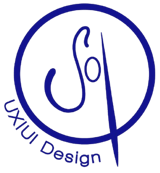Add your promotional text...
Gestalt Principles
Psychological Foundations for UX Design
UX|UI DESIGN
2/19/20253 min read


In previous articles, we explored the evolution of UX design from an empathy-focused approach to personalization. Today, we'll delve into the psychological foundations that underpin this field. Gestalt theory, along with UX laws, provides us with tools to create interfaces that are not only functional but also intuitive and visually appealing. Does Hick's Law ring a bell? How about Fitts' Law? These laws, based on psychological principles like Gestalt, allow us to design more efficient and enjoyable digital experiences. Just as puzzle pieces fit together perfectly to form a complete image, the elements of an interface must be organized logically and coherently to facilitate user understanding.
Gestalt Principles and Their Application in UX
Gestalt studies how we perceive and organize visual information. These principles help us understand how the human brain groups elements and creates patterns, which in turn influences our perception of the world. By applying these principles to interface design, we can create more intuitive and coherent experiences.
Proximity: Elements that are close together tend to be perceived as a group. In UX, this means grouping related elements to facilitate understanding. For example, in a form, related fields (name, surname, email) should be visually grouped.
Similarity: Similar elements tend to be perceived as a group. In UX, this translates into using similar visual elements to indicate related elements. For example, use the same type of icon for all delete actions.
Closure: We tend to complete incomplete shapes. In UX, we can use this principle to create logos or interfaces that are more memorable and recognizable.
Continuity: We tend to follow continuous lines and shapes. In UX, this is applied to the design of elements that guide the user's view, such as lines that connect different sections of a page.
Figure-ground: We tend to perceive some elements as figures that stand out against a background. In UX, this is used to create a clear visual hierarchy and highlight the most important information.
Gestalt and User Experience
By applying Gestalt principles, we can significantly improve the user experience:
Increased ease of use: Well-structured and visually coherent interfaces are easier to navigate and understand.
Greater satisfaction: An aesthetic and pleasing design generates a more positive experience.
Better recall: Designs based on Gestalt are more memorable and easier to recognize.
Increased efficiency: By reducing the user's cognitive load, we allow them to focus on the main tasks.
Gestalt and Empathy: A Powerful Combination
Gestalt theory provides us with a solid foundation for creating intuitive and visually appealing interfaces. By combining Gestalt principles with empathy, we can design products that satisfy both the rational and emotional needs of users.
A good example of application is Google Drive, which offers a combination of visual perception and empathy, creating a functional and pleasant experience. This combination not only uses Gestalt principles to make its interface clearer but also considers the emotions and needs of the user:
It offers a predictive search bar to minimize frustration.
It uses white space and a clear visual hierarchy to avoid cognitive overload.
It allows quick actions with a right-click, aligning with user expectations and reducing friction.
Conclusion
Gestalt theory provides us with a solid conceptual framework for creating intuitive and visually appealing interfaces. By applying these principles, we can improve the user experience and build products that last in people's memory.
I invite you to explore the principles of Gestalt and apply them in your own projects!
Glossary:
Gestalt: School of psychology that studies how we perceive and organize visual information.
Proximity: Tendency to group nearby elements.
Similarity: Tendency to group similar elements.
Closure: Tendency to complete incomplete shapes.
Continuity: Tendency to follow continuous lines and shapes.
Figure-ground: Tendency to perceive elements as figures that stand out against a background.
Visual hierarchy: Organization of visual elements in a design to guide the user's attention.
Usability: Ease with which a user can learn and use a product.
User interface (UI): Visual and functional part with which users interact in a digital product.
Hick's Law: The time it takes a user to make a decision increases with the number of options.
Fitts' Law: The time to reach a target is inversely proportional to the size of the target and the distance to the cursor.
Subscribe to our newsletter
Receive an alert every time new useful content is published for your personal and professional development


